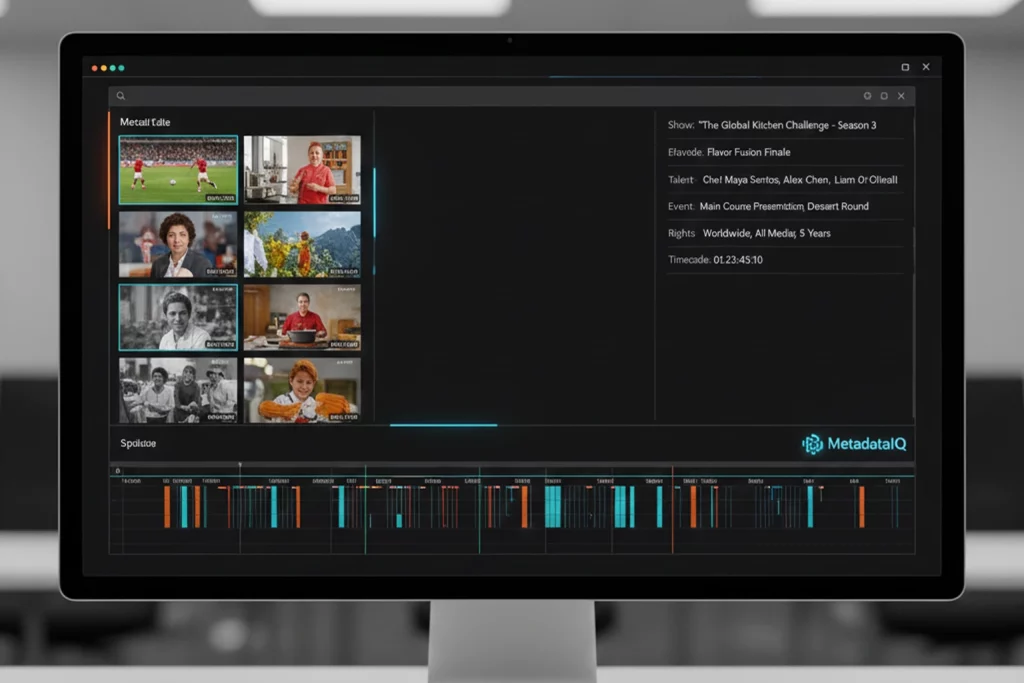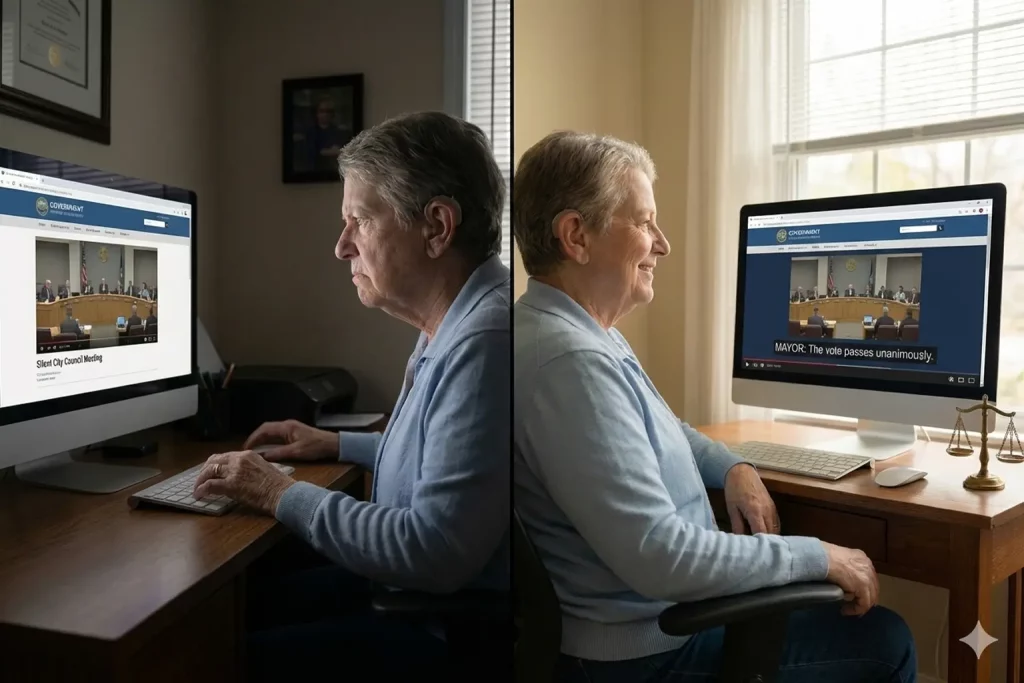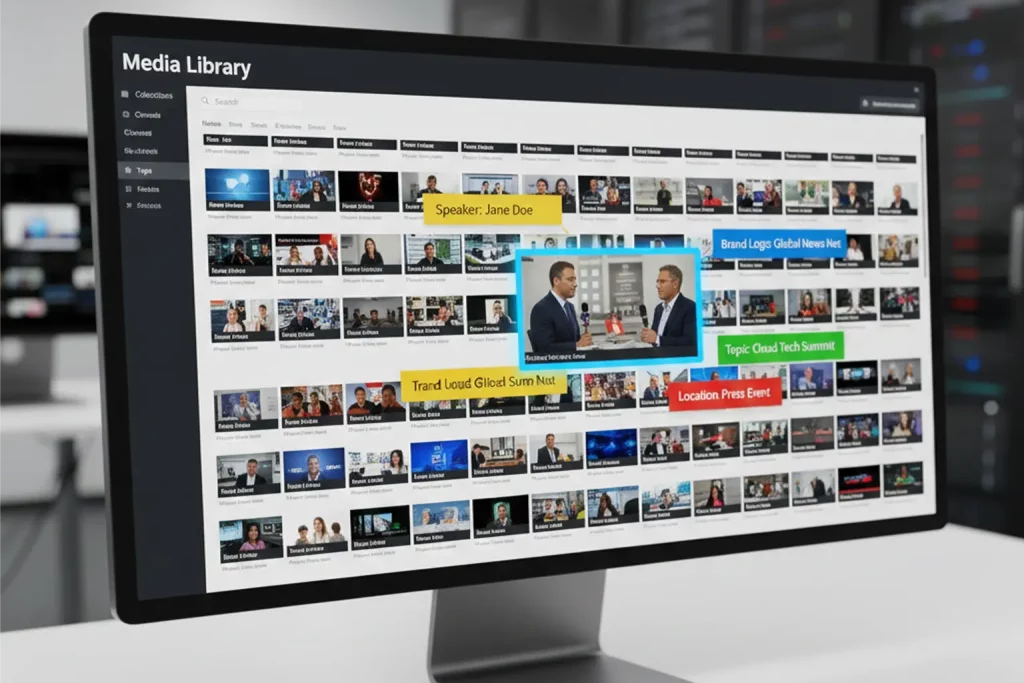SCTE-35 is the backbone of seamless content transitions in today’s broadcast and streaming workflows. Whether you’re watching live sports, catching up on your favorite shows, or streaming content on-demand, SCTE-35 quietly ensures that ads and content swaps appear right on cue. For broadcasters and OTT platforms, it’s not just about keeping viewers happy—it’s about driving revenue with precision.
But what exactly is SCTE-35, and why is it so essential in modern content delivery?
What is SCTE-35, and Why is it Important?
SCTE-35, or Society of Cable Telecommunications Engineers Standard 35, is the industry protocol for signaling in-band events within live and pre-recorded video streams. It allows broadcasters, cable operators, and streaming platforms to insert precise markers, enabling dynamic ad placement, program replacement, and event notifications.
Its importance lies in its ability to seamlessly deliver advertising and content replacement in real-time, making it an essential standard for traditional television and over-the-top (OTT) streaming platforms. Without SCTE-35, the precise timing needed for smooth ad transitions would fall apart, leading to jarring viewer experiences.
Key Benefits of SCTE-35:
- Dynamic Ad Insertion: Precisely targets ad breaks with minimal disruptions.
- Content Personalization: Allows different regions or users to see tailored ads.
- Revenue Optimization: Maximizes monetization opportunities for broadcasters.
In short, SCTE-35 keeps content delivery smooth and the viewer experience enjoyable while broadcasters enjoy improved ROI.
How SCTE-35 Works: Key Components and Structure
At its core, SCTE-35 uses time-based splice points to signal where events, like ad breaks, should occur. These splice points are inserted as markers into the transport stream, guiding content delivery systems.
Key Components of SCTE-35:
- Splice Info Section: Defines key instructions for content replacement.
- Splice Points: The exact points where transitions, such as ad insertions, occur.
- Descriptors: Metadata providing additional instructions, like the duration of a break.
Message Structure
SCTE-35 messages consist of:
- PID (Packet Identifier): Identifies the SCTE-35 packets in the stream.
- Splice Insert Commands: Triggers and break points or program changes.
- Break Duration: Specifies how long the event (e.g., ads) will last.
SCTE-35 acts as the signaling backbone, giving precise instructions to ad servers and playout systems. This ensures perfect synchronization between content and inserted advertisements.
Transform Your SCTE-35 Monitoring With Digital Nirvana
At Digital Nirvana, we understand how critical SCTE-35 monitoring is for flawless ad insertions and seamless content transitions. Whether you’re broadcasting live sports, streaming OTT content, or managing a 24/7 playout, ensuring SCTE-35 markers trigger accurately is non-negotiable. That’s where our advanced solutions come in.
Why Our SCTE-35 Monitoring Tools Matter
Accurate SCTE-35 signaling can make or break the viewer experience. Mistimed markers lead to awkward ad placements, dropped splice points, and potential revenue loss. With our solutions, you can:
- Detect Misplaced Markers: Identify errors in SCTE-35 messages in real time.
- Ensure Marker Integrity: Verify that splice points and break durations align perfectly with your content delivery systems.
- Automate Compliance Checks: Our tools continuously monitor SCTE-35 signals to maintain compliance across all broadcast and OTT workflows.
AI-Powered Monitoring for Real-Time Accuracy
Our cloud-based platform leverages AI and automation to simplify SCTE-35 monitoring. Analyzing every SCTE-35 marker within your transport streams, we help you avoid manual errors and achieve unparalleled accuracy. Whether you’re delivering dynamic ads, replacing programs, or managing regional content, our technology ensures your workflows run seamlessly.
Built for the Future of Broadcasting
SCTE-35 monitoring isn’t just about today’s requirements—it’s about staying prepared for tomorrow. Broadcasters need scalable solutions with the rise of server-side ad insertion (SSAI) and OTT streaming. Our tools integrate seamlessly with modern playout systems, allowing you to deliver precise, targeted ad breaks while optimizing viewer experiences.
Why Broadcasters Trust Digital Nirvana
We’ve built a reputation for combining accuracy, automation, and scalability. Our clients rely on us to keep their SCTE-35 workflows running smoothly, minimizing disruptions and maximizing ad revenue.
At Digital Nirvana, we don’t just monitor SCTE-35 events—we ensure they work flawlessly so you can focus on what you do best: delivering exceptional content. If you want to streamline your SCTE-35 workflows, our tools are here to simplify the process and drive results.
Let’s make every marker count. Contact us today and discover how Digital Nirvana can enhance your SCTE-35 monitoring capabilities.
The Role of SCTE-35 in Ad Insertion and Content Replacement
SCTE-35 revolutionizes how ads and replacement content are inserted, making it highly adaptable for modern broadcasting.
Dynamic Ad Insertion
SCTE-35 markers allow broadcasters and OTT platforms to replace traditional static ads with targeted, dynamic ads. This can be personalized for different audiences based on location, device, or user behavior. For example:
- Live Sports: Insert targeted ads during halftime.
- News Broadcasts: Replace national ads with local sponsorships.
Seamless Content Replacement
SCTE-35 also supports content replacement, enabling broadcasters to swap out programs based on contractual agreements or regional differences. For OTT platforms, this ensures content complies with licensing rules across different territories.
Why It Matters
- Better Viewer Experience: Eliminates awkward, mistimed ad transitions.
- Maximized Revenue: Inserts personalized ads that convert better.
- Compliance-Friendly: Supports geo-specific content delivery.
By combining accuracy with adaptability, SCTE-35 ensures content and ads flow smoothly in today’s evolving media landscape.
SCTE-35 vs. SCTE-104: What’s the Difference?
While SCTE-35 and SCTE-104 share the same end goal—event signaling for content and ad insertion—they differ in where and how they operate.
SCTE-104
- Location: Works within baseband video at the production level.
- Usage: Primarily used in studio workflows for content editing.
- Conversion: SCTE-104 signals are often converted into SCTE-35 markers for distribution.
SCTE-35
- Location: Works at the transport stream level for final broadcast or streaming.
- Usage: Embedded in the video stream to enable dynamic ad insertion and content replacement.
Why the Difference Matters
Broadcasters rely on SCTE-104 for production workflows and convert these signals to SCTE-35 when distributing the content. Understanding this relationship ensures accurate event signaling throughout the broadcast chain.
Challenges in SCTE-35 Monitoring and Implementation
Despite its many benefits, SCTE-35 implementation and monitoring come with challenges:
1. Marker Accuracy
Precise insertion of SCTE-35 markers is critical. Any delay or misplacement can disrupt ad transitions or content synchronization, leading to poor user experiences.
2. Timing Issues
For live broadcasts, delays in SCTE-35 signaling can cause ads to appear late, cutting into valuable content time.
3. Integration with Legacy Systems
Many traditional broadcast systems require updates to handle SCTE-35 markers, creating integration challenges.
4. Monitoring Complexity
SCTE-35 markers need continuous monitoring to ensure events trigger correctly. Errors, such as dropped splice points, can derail content delivery.
Best Practices for Effective SCTE-35 Monitoring
To ensure flawless SCTE-35 signaling, broadcasters and streaming platforms must adopt the following best practices:
1. Real-Time Monitoring Tools
Use specialized SCTE-35 monitoring tools to track splice points, break durations, and message accuracy in real-time.
2. Automate Marker Verification
Automation tools can detect missing or mistimed SCTE-35 markers, preventing manual errors.
3. Synchronize with Content Delivery Systems
Ensure your SCTE-35 markers align with your playout systems and ad servers. This guarantees seamless transitions between content and ads.
4. Conduct Regular Testing
Before major broadcasts, SCTE-35 testing is performed to identify potential issues.
5. Use Clear Logging
Implement detailed logging systems to document SCTE-35 events. This makes it easier to troubleshoot errors and optimize workflows.
The Future of SCTE-35 in OTT and Live Streaming
As live streaming and OTT platforms dominate the media industry, SCTE-35 will play an increasingly pivotal role in content delivery.
Personalized Ad Delivery
With advancements in AI and user targeting, SCTE-35 will enable broadcasters to serve hyper-personalized ads based on viewer preferences and real-time behavior.
Server-Side Ad Insertion (SSAI)
SCTE-35 integrates seamlessly with SSAI, enabling platforms to deliver buffer-free, dynamic ad insertion for live and on-demand content.
Cloud-Based SCTE-35 Monitoring
Future tools will rely on cloud infrastructure to monitor SCTE-35 events across global OTT networks, ensuring scalability and accuracy.
Interactivity and Engagement
SCTE-35 may soon support interactive ads, allowing viewers to engage with promotions directly on their screens without disrupting the viewing experience.
Conclusion: Optimize Your Content Workflow with SCTE-35
SCTE-35 monitoring is the unsung hero of modern broadcasting, enabling precise ad insertion, content personalization, and seamless transitions. By understanding how SCTE-35 works and implementing best practices for monitoring, broadcasters can optimize workflows, maximize revenue, and deliver flawless viewer experiences.
Ready to ensure your SCTE-35 events run without a hitch? Start using advanced monitoring tools today and stay ahead in the evolving streaming landscape.
Digital Nirvana: Empowering Knowledge Through Technology
Digital Nirvana stands at the forefront of the digital age, offering cutting-edge knowledge management solutions and business process automation.
Key Highlights of Digital Nirvana –
- Knowledge Management Solutions: Tailored to enhance organizational efficiency and insight discovery.
- Business Process Automation: Streamline operations with our sophisticated automation tools.
- AI-Based Workflows: Leverage the power of AI to optimize content creation and data analysis.
- Machine Learning & NLP: Our algorithms improve workflows and processes through continuous learning.
- Global Reliability: Trusted worldwide for improving scale, ensuring compliance, and reducing costs.
Book a free demo to scale up your content moderation, metadata, and indexing strategy for your media assets with minimal effort and get a firsthand experience of Digital Nirvana’s services.
FAQs
1. What does SCTE-35 stand for?
SCTE-35 refers to the Society of Cable Telecommunications Engineers Standard 35. It is used to signal events like ad insertion in video streams.
2. How is SCTE-35 used in live streaming?
SCTE-35 markers are embedded in live streams to indicate ad breaks, enabling dynamic ad insertion and seamless content transitions.
3. What is the difference between SCTE-35 and SCTE-104?
SCTE-104 works at the baseband level during production, while SCTE-35 operates in the transport stream during distribution.
4. Why is SCTE-35 monitoring important?
Monitoring ensures SCTE-35 markers trigger correctly, preventing errors in ad insertions and maintaining a smooth viewer experience.
5. Can SCTE-35 support personalized advertising?
Yes, SCTE-35 allows platforms to deliver dynamic, region-specific, and personalized ads for viewers across different devices.




